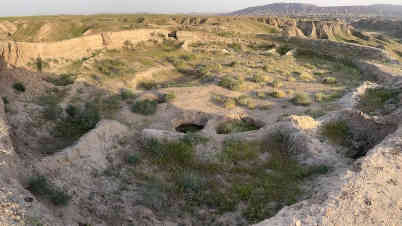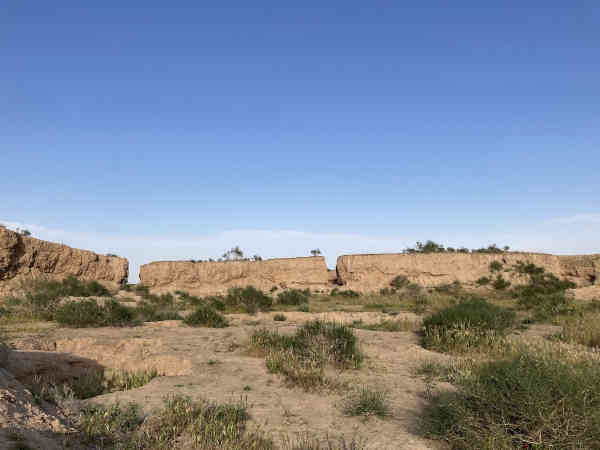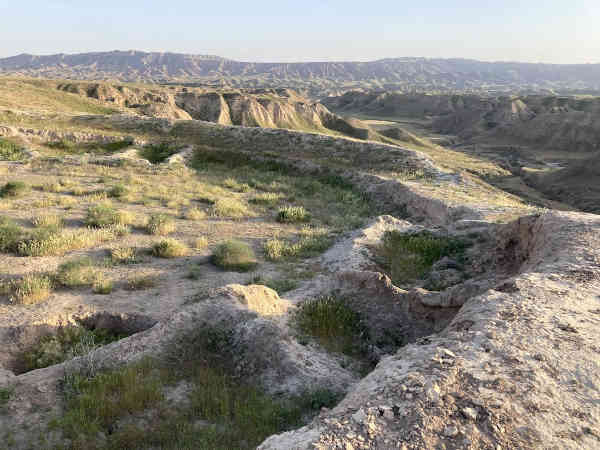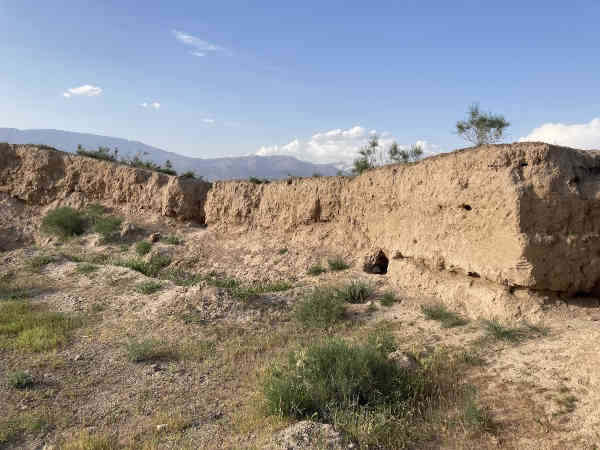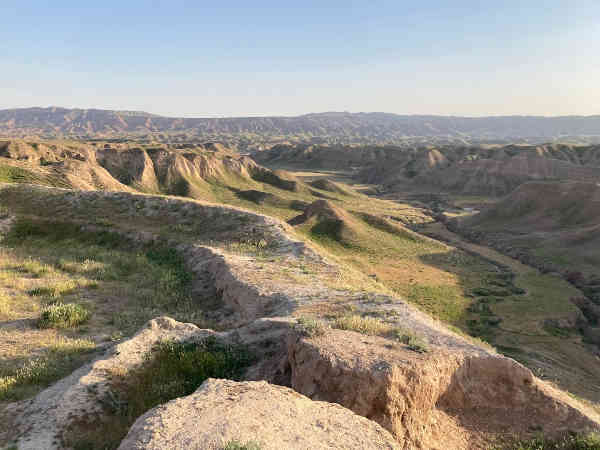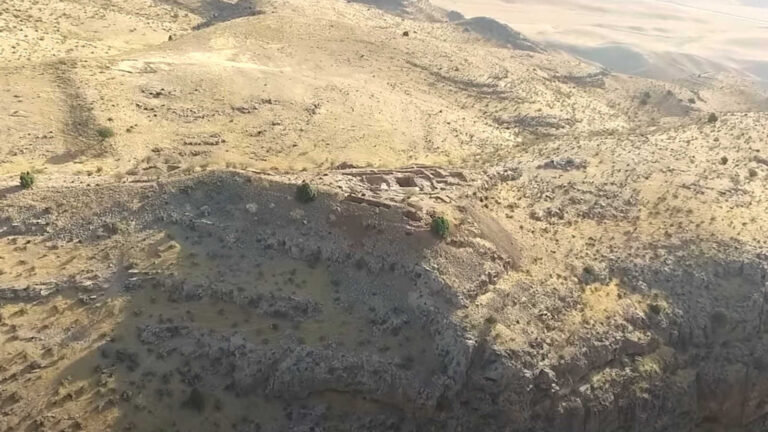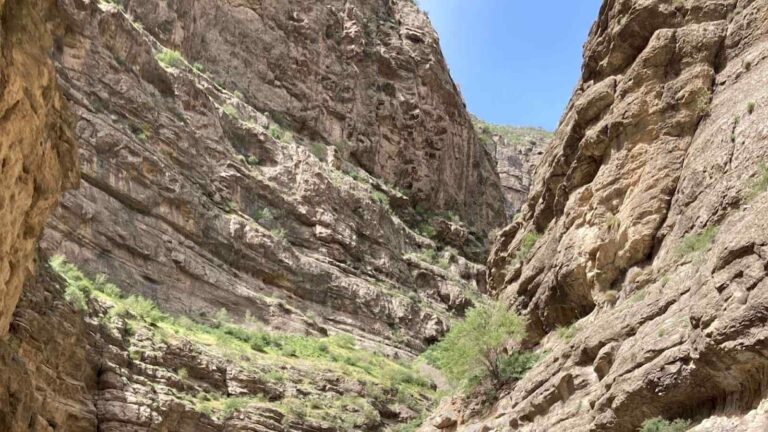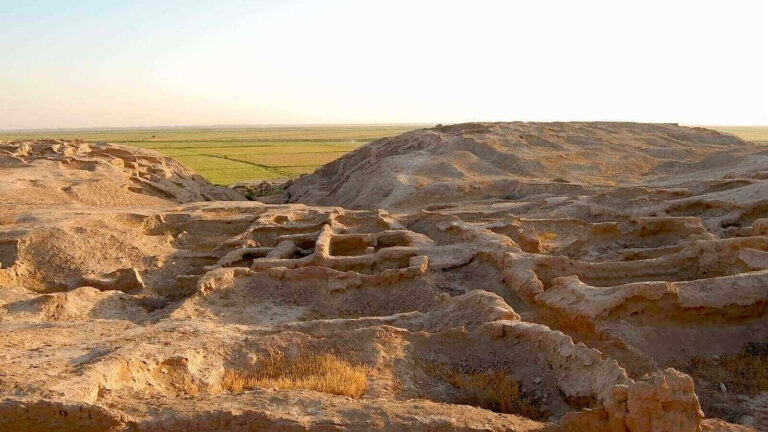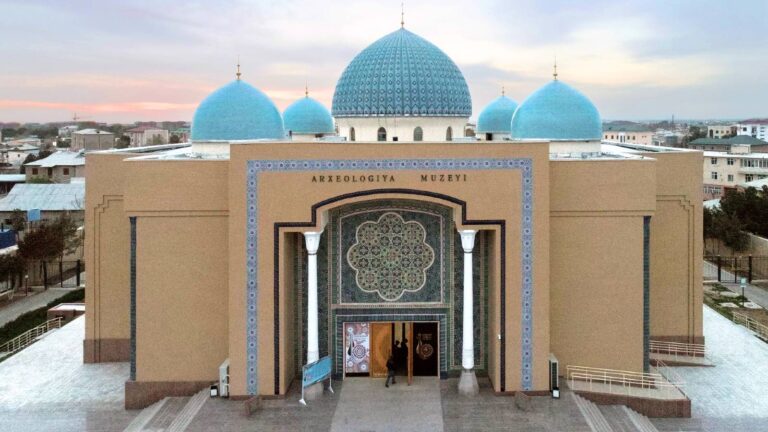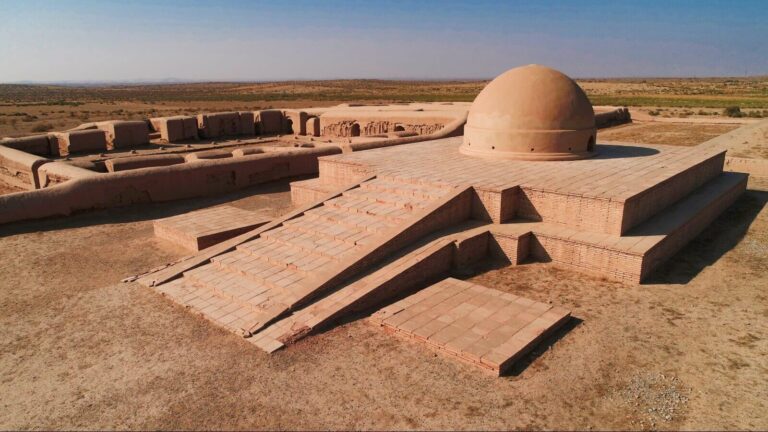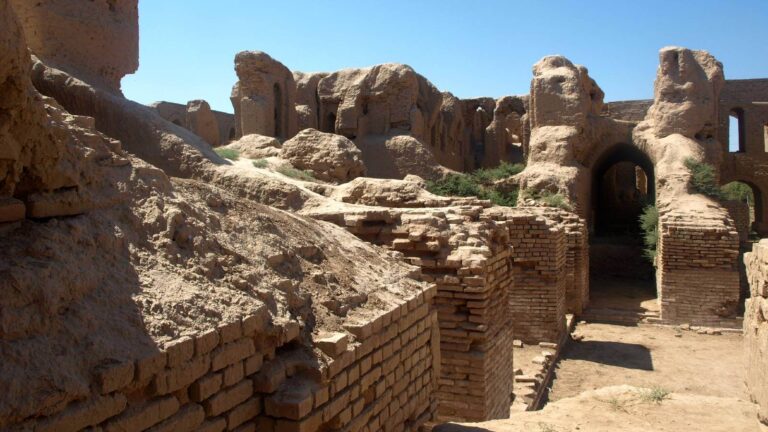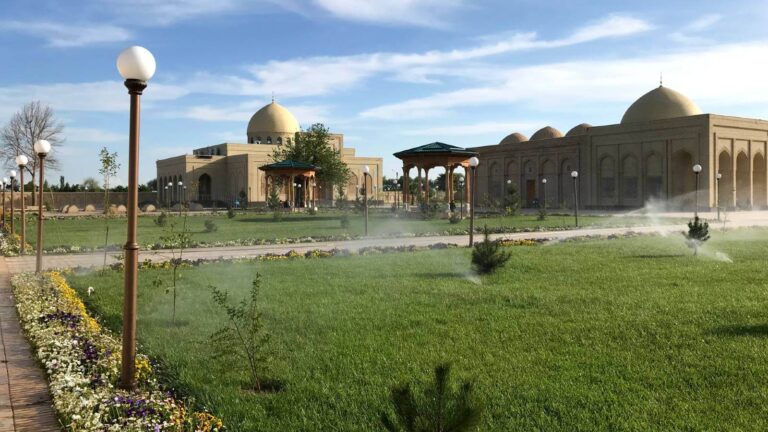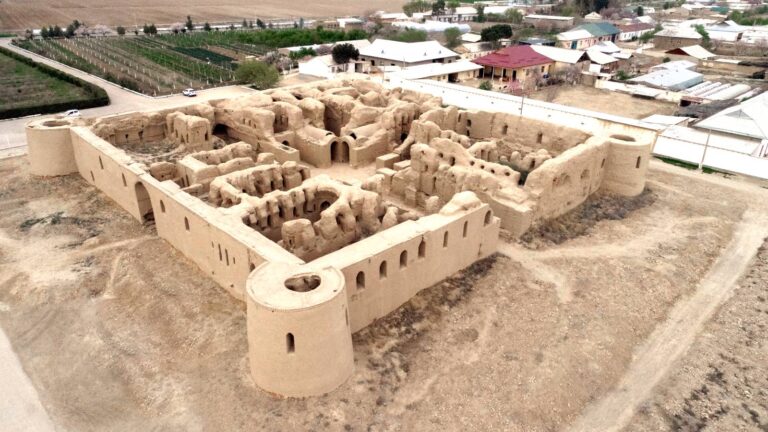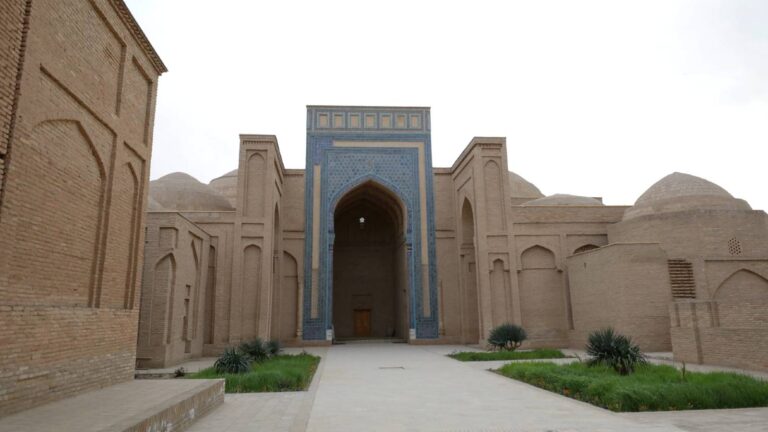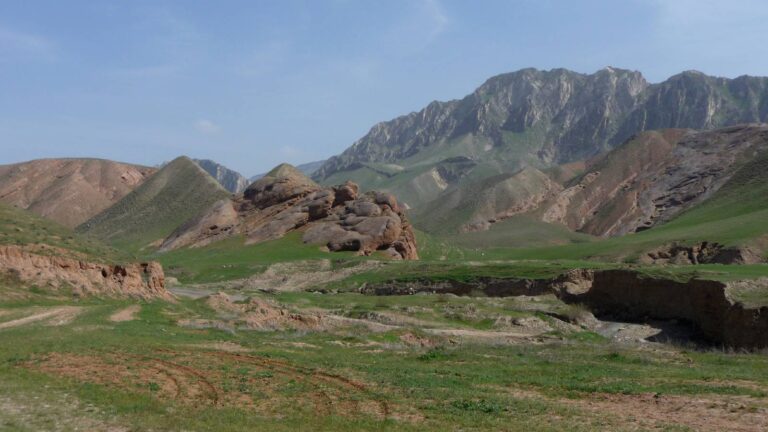Getting There
Take the train to Baysun and then continue by road to Kurganzol. You will have to make the last 10-15 minutes of the journey across fields on foot.
What to Expect
Kurganzol is unusual because it is round, with the bases of six towers still visible in what is left of the 2.5m thick brick wall. The towers are all on one side, because the cliff would have provided sufficient protection in between.
Although you have to look closely to see them, there are some remarkable innovations at Kurganzol. There’s a reservoir for collecting rainwater, accompanied by an overflow drain, and also a structure which appears to have functioned like a refrigerator to keep foods cool.
History
Kurganzol is a Greek fortress in Surkhandarya. The location was chosen by Alexander the Great at the top of a steep cliff. Housing around 50 men, it was one in a line of fortifications along this mountain range, and the soldiers in the garrisons would have used smoke and fire to signal messages to one another. Kurganzol dates from the early part of the 4th century BC. It didn’t last long, however. Twice it caught fire. After the first incident, it was rebuilt, but the second time it was abandoned.

